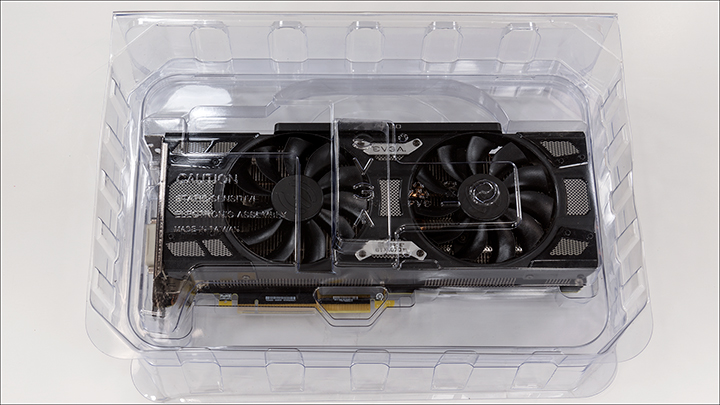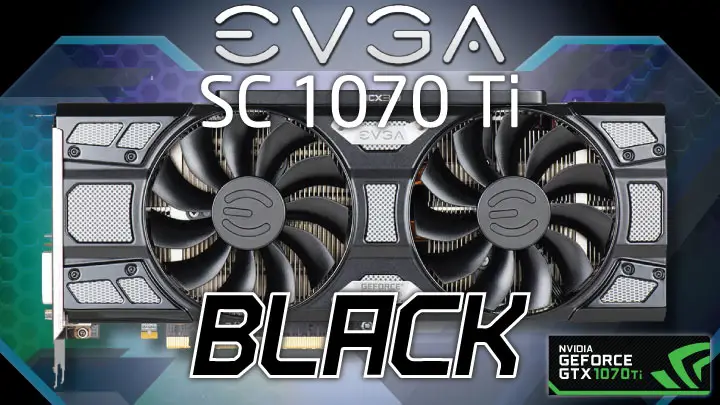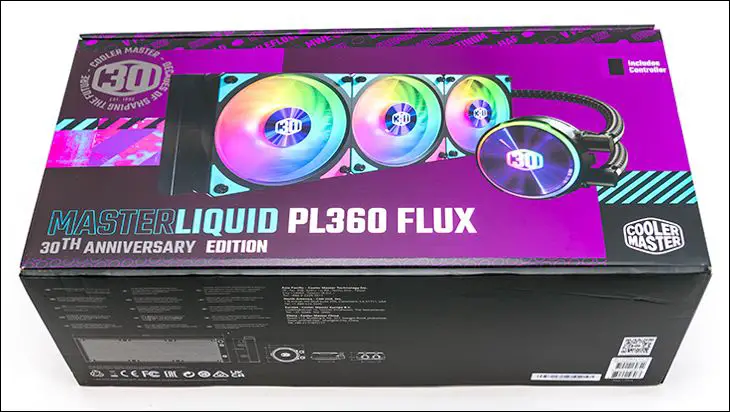Before begin a bit of explanation is in order. The NVIDIA GeForce GTC 1070Ti is a rather… odd creation. Not only was it a rather late addition to the 10-series lineup its combination of cores and memory did leave a lot of people wondering exactly what hole it was meant to plug. The answer is pretty simple: it was meant to stem the AMD tide that found a crack in NVIDIA’s armor in between the 1080 and 1070 lineup. In this it was successful but in order to do this NVIDIA’s design team did have to get creative… as they wanted a more powerful card… but one that was not too powerful.
To do this they basically created a new GP104 variation (the GP104-300) that has almost as much CUDA cores (2432) as a 1080 (2560) but with seemingly less bandwidth (256 vs 320). Then they ‘handicapped’ it by making factory overclocked editions verboten – this is why all 1070Ti all the way from blowers to uber powerful cards like the EVGA FTW2 come with the exact same paper specifications of 1607/1683. This actually has led to a lot of consumer confusion as not everyone looks past paper specifications, nor has the experience to see the full potential of this Frankenstein’s monster. Miners however did see the potential and have bought a veritable ton of these cards – they may in fact be the largest group of 1070Ti owners.
The reason that miners love this particular 10-series variant is simple… few run their cards at stock settings. To be more precise on paper it may seem like a huge gap between ‘older’ (read highly refined) GDDR5 memory and its ‘8Ghz’ frequencies and new (read less refined) GFFR5X ‘10GHz’ memory. The reality is that when manufactures use excellent examples of GDDR5 memory chips their potential is actually right in the same ballpark at 9 to 9.5Ghz. To be precise instead of having a 20 percent memory bandwidth handicap it ranges between 5 and 10 percent. Mix in almost as much processing power and the GeForce GTX 1070Ti series is in reality much closer in real world performance to a GeForce GTX 1080 than the GeForce GTX 1070 that the paper specifications would lead you to believe.
Basically, all 1070Ti’s fall into a niche that either you know what they are capable of… or you don’t. Sadly, a lot of people fall into the latter category. This is actually why we can see a lot of 1070Ti’s cropping up in the near future at 1070 and not at 1080 prices. When you then add in the whole ‘its not an ICX based cooler’ to the mix the EVGA SuperClocked Black Edition should may even become an even better ‘steal of a deal’ than most. Just make sure its not a card that came from a miner and rather came from a ‘n00b’ – as miners did push theirs to the ragged edge and are probably selling them so soon as they are on their last legs.
So with that out of the way on to specifics.

As you can see EVGA did not cut many corners when it come to the shipping container they use for the SuperClocked Black Edition GTX 1070 Ti. In fact, the exterior box is a dead ringer for the EVGA GeForce GTX 1080Ti SuperClocked Black Edition… albeit with different graphics and information listed on it.

Internally though this box is nowhere near as impressive as the GeForce GTX 1080Ti SuperClocked Black Edition. Instead of that extremely impressive foam packing EVGA opts for a plastic clamshell. This clamshell will keep the card safe while in transit but its not as good as what some use on their variants of the GeForce GTX 1070Ti. This too will lead to poor first impressions and should make the resell prices even lower.

The accessories are also a touch lackluster compared to some of EVGA’s other offerings, but they are more than good enough and cover all the bases. Expect to find the various pamphlets, driver disc, dual 6 to single 8 pin adapter that everyone else includes, but as a nod towards the PC Gaming crowd EVGA does include a nice ‘Movie Poster’ that actually does look nice on a wall – if you are into that type of thing.

As first impressions go the card itself is also not as impressive as some. For example, instead of that kick ass all-metal top fascia EVGA uses their older metal and plastic fascia that has not changed much over the years. Sure, its now black and silver instead of just silver but compared to some this is more a ‘meh’ than ‘wow’ type first impression.

With that said the ACX design is a tried and true one that will right at home in many a different style custom build. Just do not expect to be wowed by an array of blinking LEDS (about the only thing that lights up is the edge ‘EVGA’ logo). As to how good this custom cooling solution is, well let’s keep it simple. The 1070Ti is a late comer to the scene and as such all EVGA versions are post fix. This means that concerns over them overheating and dying (which was overblown ‘issue’ to begin with) are moot. They do run hotter than their ICX brethren but that is simply a case of the ICX being so bloody brilliant it makes everything else look less than optimal in comparison.

In testing the EVGA 1070Ti SC BE will run hotter (and thus slower) than the ICX equipped EVGA 1070Ti FTW2 but compared to most dual fan GTX 1070Ti’s its temperatures are right in the same ballpark. This should come as no surprise as when you combine a rather decent sized heatsink (that uses multiple massive 8mm heatpipes) with two large ball bearing fans the results are going to be good. Not so cool it never even gets warm but right about where you should expect any standard size, dual slot wide cooler to run. Put another way we have some regular GeForce GTX 1070 cards that run hotter than this card.

Underneath this heatsink you can expect to find a five-phase power delivery subsystem dedicated to the core and a single phase for the memory. This 5+1 configuration is more than good enough for handling all but the most demanding of overclocks… even if we did wish it was a 5+2 configuration. It is more than good enough, but if you plan on really pushing the limits the 10+2 ICX FTW2 version is the card you want. Most however will not notice the difference but will notice the difference in asking price. Pick which is more important to you and you have the card that is right for you.

One thing that will be a bit of a disappointment is the power input EVGA has opted for. Standard / reference GeForce GTX 1070Ti’s are spec’ed with a single 8-pin PCIe cable port… and that is what the SC BE model also uses. We do wish that EVGA had opted for the same 6+8 config found on the FTW2 but once again most will not care. 150 watts from the port and another 75 from the PCIe slot is still 225 watts – giving you up to 75 watts of overclocking headroom. The downside to this from an alt coin miner perspective is that it will be pulling power from the PCIe slot. Possibly as much as the full 75 watts. So… use Molex or PCIe 6 pin equipped adapters and leave the dangerous SATA cables where they belong – providing power to storage devices.

In keeping with SuperClocked tradition you can expect to find a single DVI-D and HDMI connector as well as three DP ports. In other words, it is pretty much standard affair in this regard and should cover off most users needs more than adequately.
Overall the EVGA GeForce GTX 1070Ti SuperClocked Black Edition may not be the absolute best example of what can be done with the NVIDIA 1070Ti building blocks… but it is not designed to be. This card, in keeping with a long and proud tradition, is meant to be a great example of the amount of value that can be found in this corner of the marketplace. Understand these limitations and as long as you are comfortable with them… this card should be one heck of a value for the bargain hunter in the coming months. Now let’s see exactly what ‘sacrifices’ you will actually be making when snagging this card over say a FTW2 variant… or a GeForce GTX 1080. This is where things get interesting.











